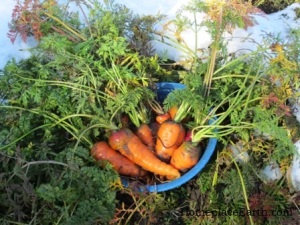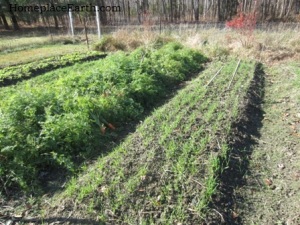This is the fourth year, of the past five, that I’ve eaten only what I’ve grown on the Fridays in Lent. I call these days Homegrown Fridays. I find that it deepens my understanding of what it takes to feed ourselves when I limit myself to only what I’ve grown. By this time of year stored food supplies are diminished and the garden is not quite awake. Our garden and food preservation program has evolved to depend on staple crops that can be stored, rather than canned or frozen. Although I did do a little canning this year, most of the things that couldn’t be stored properly to keep were dried in our solar food dryers.
In the photo you will see one of our Homegrown Friday dinners. It consisted of cowpeas, sweet potatoes, peanuts, and collards fresh from the garden. I often try new things on these days and that day I boiled peanuts. We (my husband and I) decided that eating them raw or roasted was our preference. I depended a lot on peanuts at lunchtime this year. Maybe it was because I seemed to be extra busy on these days. I’d grab some peanuts while sweet potatoes were cooking for lunch. My peanut harvest had picked up in 2012 when I planted some after Austrian winter peas in the rotation. The previous year I had peanuts in a bed following onions and garlic. At harvest time there was a definite difference in the yield in the onion half of the bed compared to the garlic half. Winter peas were the winter cover crop preceding the onion sets that had been planted in the spring. I was pretty sure that the increased peanut yield was due to the winter pea cover crop and not the onions. In 2012 I planted one bed of peanuts after winter peas and one in a bed that had had garlic, onions, and kale. The onions were multipliers and had been there with the garlic and kale since the previous fall. The yield following the Austrian winter peas was three times the one following the alliums and kale.
I had a great carrot harvest this winter. You can read about it in my post on Winter Carrots. I also had beets in the garden through the winter. The black walnuts yielded in 2012 so I shelled some and made some oil to put on the carrots and beets when I roasted them. Shelling the walnuts and pressing oil took a long time. I wouldn’t want to depend on that for my cooking oil. Frying locally grown bacon and saving the fat for cooking is a lot easier, but that wasn’t an option for these Fridays, since I hadn’t raised the pig. The roasted carrots and beets were delicious.
Soup made from dried ingredients is always on the menu during this time. One soup I made had no dried ingredients. It was made from carrots, butternut squash, and garlic. I cut them up and roasted them—no oil that day. Then I added water and simmered the cut up, roasted vegetables for about 20 minutes. It all went in the blender and resulted in what you see in this third picture. It was good, but a little bit of dairy added—sour cream, yogurt, or milk—would have been nice. Onions would have been a good addition, but I was down to my dried onions and they were in short supply.
Dried onions went into bean burgers using the same recipe as I did in 2012. Our staples for these meals from stored crops were sweet potatoes, peanuts, cowpeas, garlic, sorghum (for flour) and corn (for cornmeal). Fresh from the garden came collards, kale, carrots, and beets. I ground Bloody Butcher corn to make cornmeal mush for breakfast. We have chickens, so we have eggs. I use an egg or two occasionally on Homegrown Fridays, but not much because I don’t grow all the feed for the chickens. Since some of their nutrition comes from our property, an occasional egg is included. Dried tomatoes were important for sauce and other dried vegetables and herbs provided variety in our meals. I’ve already written about our new tea ingredient—Red Thai Roselle Hibiscus. With such a great honey harvest last year we could sweeten our cornmeal mush. Unfortunately, our two beehives didn’t make it through the winter, so I’ll be looking for new bees this year. We had mead made from our honey and grapes, and popcorn cooked without oil.
Observing Homegrown Fridays at this time of year makes me more determined to work out my vole problem with the potatoes to make sure I have enough to last through the winter. I’m also acutely aware that I need to up my wheat harvest. I had an interesting conversation with Eli Rogosa of the Heritage Wheat Conservancy in January while I was preparing an article for Mother Earth News that will appear in the June/July 2013 issue. Eli filled me in on heritage wheat and how to grow it. A chart with her recommended varieties for each region of the U.S. will appear in the article. A chart with crops I’ve mentioned here and varieties recommended for each region will also be included in the article. You will be interested in that article if you want to grow staple crops for your meals.
If you have done any of this, even in a small way, I welcome your comments. It is in sharing, both information and food, that we will move forward on this journey. 















